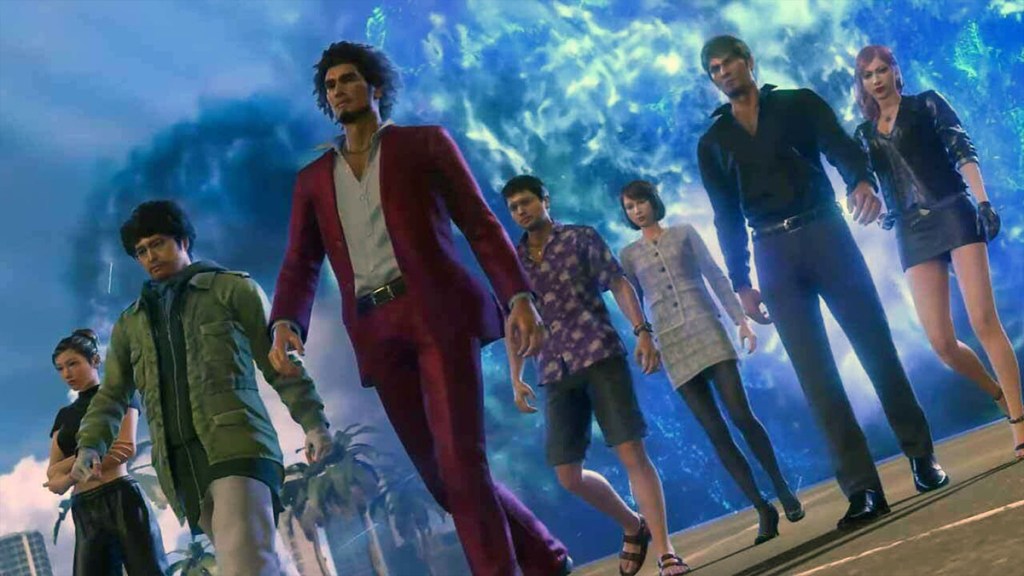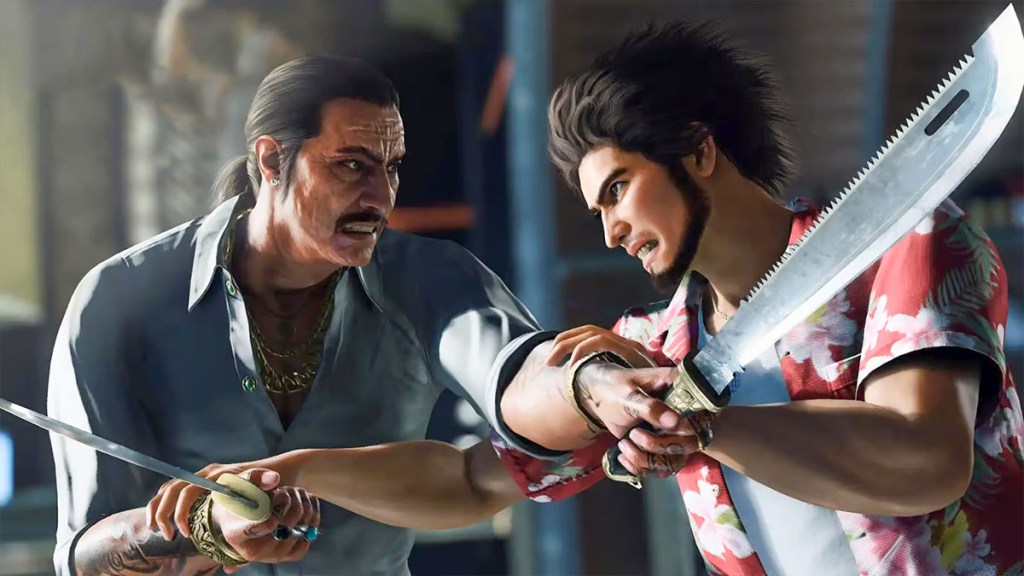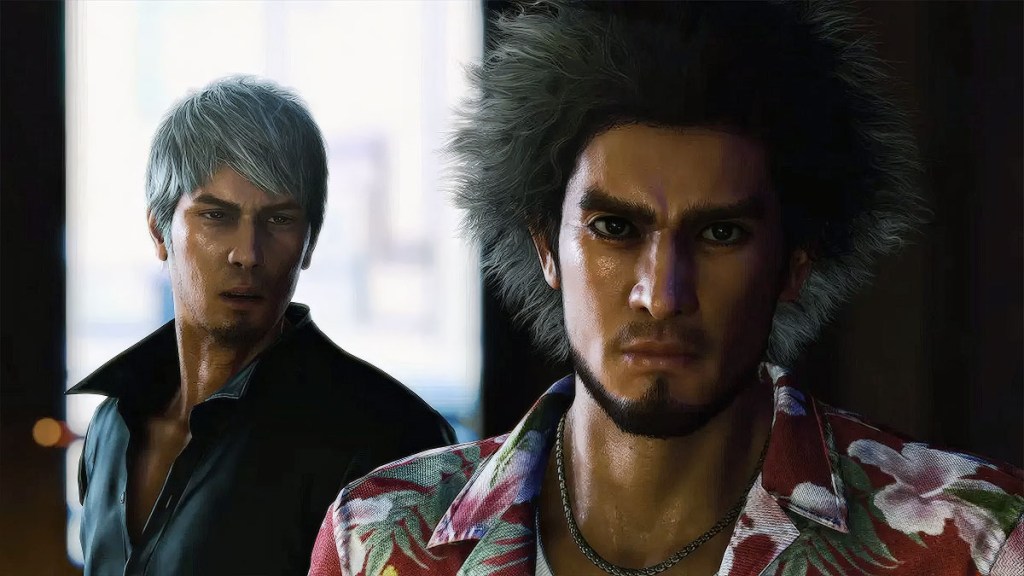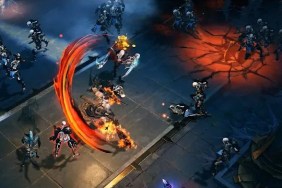Like a Dragon: Infinite Wealth brings back Ichiban and crew for another outing, this time to Hawaii. Yakuza 7’s transition to a turn-based RPG had the potential to backfire. However, it ended up being immensely popular, and I was excited to see if the series could keep up this momentum. Even though we’ve seen three Ryu Ga Gotoku titles in the last year, it’s the one franchise that leaves me wanting more. Infinite Wealth was no different, which is an even more meaningful statement when you consider its generous runtime.
Aloha Yokohama, Aloha Hawaii!

Like a Dragon: Infinite Wealth continues the story of Ichiban Kasuga, the Hero of Yokohama who has spent the three years since Yakuza 7 happened as a contractor at Hello Work helping former Yakuza find gainful employment. The Great Dissolution of the Omi Alliance and Tojo Clan left thousands of Yakuza without the means to earn a living, and strict laws and social stigma have many of them desperate. As a result, these men flock to Yokohama from all over Japan, seeking Ichiban’s help.
Unfortunately, Ichiban’s altruism ends up backfiring on him. Shortly after the game begins, Tatara Channel, a real-crime VTuber, publishes a smear piece accusing him of taking bribes and using the ex-Yakuza to run a criminal ring. As a result, Ichiban loses his job at Hello Work, and several of his friends are also affected.
However, in the aftermath, an old acquaintance contracts Ichiban and tells him that his mother, Akane, is still alive and wants to meet him. With mixed feelings, he makes for Hawaii to finally meet the woman who left him in a locker over forty years ago.
Along the way, Ichiban crosses paths with Kazuma Kiryu, who is also looking for Akane on behalf of the Daidoji Faction. When it becomes evident that she’s in some sort of danger, the two join forces to find her before elements of Hawaii’s criminal underbelly can.
Blue Hawaii

Unfortunately, Ichiban’s character has regressed somewhat in Infinite Wealth. Part of the catalyst for the events in Yakuza 7 was the betrayal of several people who were very close to him. You’d think he’d have learned to be more wary of people’s intentions in the three years since, but that’s not the case. This time around, Ichiban’s naivety isn’t so much charming as it is baffling. For example, a major character betrays the party no less than three times during the game, one of which ends with the death of several allies. Despite this, Ichiban is ready to welcome them back with open arms at the first sign of an apology.
This regression also extends to the plot as a whole. It often feels like the party has little agency. You chase down a lead, it falls through, and the gang is stuck waiting for some external force to push them to the next scene. Several times in the story, the party finds themselves stuck at a dead end and decides to go to the beach or something.
It’s a bit odd, considering how often you’re reminded that the clock is ticking. The pacing gets better as the game progresses, and you get a look at the broader picture. Still, it’s sometimes comical how lackadaisical the party is about their primary objective.
Fortunately, the moment-to-moment interactions between party members are still gold. So, I decided to let go of the big picture and hang on for the ride than try to logic out the main plot. After all, when you’re capturing homeless ruffians like they’re Pokemon as part of a side quest, it should be easy to suspend disbelief as a whole.
The Dragon of Dojima says goodbye…. again

Including Kiryu as a deuteragonist is a baffling decision as well. Yakuza: Like a Dragon felt like a clean generational break. We saw the giants of the underworld, Kiryu, Majima, Saejima, Dojima, and Watase, all come together and dissolve the major Yakuza alliances, putting a pin in the story arcs we followed featuring the Tojo Clan and Omi Alliance throughout the series. It also served to show that Kiryu is still out there doing his thing but that the torch was being passed.
Instead of letting him go out on a high note, Kiryu has been brought back as a shadow of his former self. Because of his tremendous strength and influence, the plot constantly finds ways to nerf him. So, he has cancer and can’t use his real name because he faked his death. The result is that a good portion of the game centers around him and the party moping around and lamenting his sad fate.
Irritatingly, part of this is everyone constantly reminding him that he shouldn’t be drinking. Drink Links return as a mechanic in this game, and nearly every one of Kiryu’s includes one or more comments about how he should watch his drinking because of his delicate condition despite nary a whisper about the ten times he’s been shot, stabbed, or beaten to the pavement in the last hour or so.
Tacticool

The combat, on the other hand, sees a massive improvement from Yakuza 7. While battles are still turn-based, you can move each character a limited amount of space on each of their rounds. Additionally, each skill now either affects a single enemy or has an area of effect. So, fights are a lot more tactical as you attempt to line up your foes so your attacks do the most damage. You also get bonus damage to your regular attacks for being in proximity or attacking them from behind, making your party’s placement even more important.
Of course, not every fight will be a thrill ride, so auto-battle is still an option. The AI was fairly good at finding the optimal location and distance to attack from, but if you leave it to its own devices, it tends toward using skills every turn, which wears down your MP quickly. As such, I left it on “Do not use skills” when I used this feature for most of the game.
Enemy levels are much better balanced in Infinite Wealth than in Yakuza 7. They no longer end up pathetically weak in one area and obnoxiously strong in others. Instead, enemy-level scaling increases across each map at several points in the game. However, it doesn’t scale to the players (like Final Fantasy 8), so you’ll still find that there are tougher parts of town, If you so choose, you can still overlevel and make chumps out of all your foes.
A small but welcome quality of life improvement in Infinite Wealth is the Smackdown ability, which allows you to instantly defeat any group of enemies that’s significantly weaker than your party. In the previous game, your best option was to turn on auto-battle and zone out, so I appreciated this speeding things up.
Games within a game
It wouldn’t be a Yakuza title without minigames, and Ryu Ga Gotoku Studio has gone above and beyond in Infinite Wealth. You have the standard arcade games, Mahjong, Shogi, Poker, Blackjack, Koi-Koi, baseball cages, and so on that are series staples. You can spend hours playing these alone. However, the two big attractions are the Sujimon League and Dondoko Island.
If you played Yakuza 7, you’ll remember the Sujimon Sensei and his quest to fill the Sujidex. This time around, you can do more than observe these strange denizens; you can capture and fight them. That’s right, this game features a full Pokemon spoof. You can catch them, level them, and evolve them in your quest to become the top trainer in the Sujimon League. This lengthy sidequest is masterfully woven into the main game but could easily be a separate title.
One huge sidequest would have been impressive, but Ryu Ga Gotoku went for broke and developed Dondoko Island. Ichiban is whisked away to this destitute resort and takes it upon himself to fight the pirates, polluting it with waste and restoring it to its former glory. Again, this is basically another game within a game that is reminiscent of Animal Crossing. You clean up the island, unlock new areas, and eventually invite guests to visit your resort. Each guest has specific preferences you’ll need to meet to please them, and you can eventually ask them to move to the island permanently. There’s a massive amount of props and structures you can build on the island, and you can let your imagination run wild.
These are my two favorite side activities to date in the series, and it’s impressive how well they’re integrated into the main game.
The DLC Situation
Like a Dragon: Infinite Wealth launched alongside almost $160 worth of DLC. Fortunately, a good chunk of this is boosters that most players won’t be interested in. These are essentially cheats that let you level your characters, jobs, or weapons quicker. Given how well-balanced the game is, I can’t imagine why you’d want these, but they’re harmless.
What’s concerning is that the $60 of DLC is made up of content that really should have been in the base game. In particular, New Game Plus and the endgame dungeon are locked behind the Master Vacation Bundle, which is $20 alone. The other packs contain outfits, Dondoko Island guests and Sujimon of the party and iconic series characters, extra music tracks, and two jobs. You get a $20 discount if you purchase the Ultimate Edition ($70+$60 vs. $120), but that’s a big chunk of change for what you get.
I’m not deducting points from the review over these egregious launch-day DLC practices because I believe the base game provides $70 in value regardless. However, imagine how much cooler it would be if you could have earned this content through the game. For example, it seems like a missed opportunity for marketing to not hide cool things like a Goro Majima Sujimon behind some obscure task for players to share online.
Like a Dragon: Infinite Wealth Final Verdict
After Yakuza: Like a Dragon soft rebooted the series, I presumed the next entry would focus entirely on Ichiban. After all, the Yakuza were finished, Kiryu had his curtain call, and a new generation of heroes and villains took the stage. However, Like a Dragon: Infinite Wealth seems like a step backward for the series narratively. Instead of the Yokohama gang getting a new adventure without eight games worth of lore weighing them down, Infinite Wealth spends around 50% of its runtime saying goodbye to Kiryu yet again. Fortunately, improved combat and excellent side activities compensate for Infinite Wealth’s narrative struggles.
Positives and Negatives
-
Excellent side activities.
-
Improved battle system.
-
Lots of fun interactions between characters.
-
Packed to the brim with content.
-
Felt weird having Kiryu be such a big part of the plot after Yakuza 7 was a soft reboot.
-
Not as strong narratively as Yakuza: Like a Dragon.







